By: Hendrik van der Breggen
Canada’s government has decided to expand the scope of medical assistance in dying (MAID). MAID has been legal in Canada since June 2016. During the next few months the restriction that natural death must be reasonably foreseeable will be removed, and this summer the possibility of offering MAID to mature minors (children) and people with mental illness will be seriously considered.
Unfortunately, public discourse on MAID has been skewed: arguments in favor of MAID seem more prevalent than arguments against. Call me old-fashioned, but I think citizens—informed citizens—should look at pros and cons, not just pros. Let’s do that.
(Spoiler alert: I think the cons outweigh the pros.)
Clarification
First, some clarification. “Medical assistance in dying” is a euphemism—and thus is misleading at the get-go.
When certain words are considered too blunt, harsh, painful, or offensive, people sometimes substitute a euphemism, that is, a more acceptable term, a term with fewer negative connotations or with more positive connotations, than the blunt, harsh, painful, or offensive term.
Here are some examples of useful but harmless euphemisms. “I’m sorry that Sam passed away.” These words allow us to be sensitive to Sam’s grieving wife and are infinitely kinder than saying, “I’m sorry about Sam’s getting slowly crushed to death by the gravel truck.”
Another example: “May I use the washroom?” Yes, as any parent knows, these words allow children to be sensitive to those around the dinner table. Respect and politeness are good, to be sure.
Euphemisms are sometimes helpful (as in my examples), but they can also desensitize us emotionally and hide reality—including moral reality.
Interestingly, the dangers inherent in euphemisms were almost prophetically envisioned by George Orwell in his famous novel 1984 and in his lesser known essay “Politics and the English Language.” Orwell put forward the idea that an effective mechanism of political control is the manipulation of euphemisms employed in public discussion.
Back to MAID: Yes, of course, we all want medical assistance in dying. Please, doctors and nurses, provide us with clean sheets, proper nutrients, and morphine (as needed) as we die. Please, doctors and nurses, provide us with comfort as natural death takes its course. But, wait, when politicians and policy makers are talking about MAID, they’re actually talking about doctors and nurses actively causing death. MAID is physician-assisted suicide—killing.
Dying and killing are not the same. It’s important to be clear about this distinction and not be bamboozled by euphemisms.
Pro MAID: Personal autonomy
A major pro for MAID (physician-assisted suicide/killing) is the exercise of personal autonomy, that is, the individual’s choice in general and, in particular, the individual’s choice in response to suffering. Suffering can be terrible, to be sure. And freedom is precious, truly. So—yes—personal autonomy is important.
But, and this often gets neglected, the freedom to exercise one’s autonomy is not absolute. For example, I enjoy smoking a pipe. But it turns out that I do not have the freedom to smoke my pipe in my local pub (at least not in Canada). Also, I do not have the freedom to drink beer while I drive my car. Also, I do not have the freedom to drive my car on the sidewalk. Nor do I have the freedom to swing my fist without regard for the tips of other people’s noses.
In other words, although personal autonomy is important, the individual does not live in a social vacuum. In public policy matters we should think about the individual’s freedom AND the possible consequences—possible negative consequences—for our neighbors, that is, for our larger society (more on MAID’s possible negative consequences later).
Upshot: Merely appealing to personal autonomy as a justification of MAID is not enough. We’ve got to step out of our self-centered bubbles.
Pro MAID: Unbearable suffering
Another major pro for MAID is the popular argument that either we have MAID or we face an unbearably painful death, but an unbearably painful death is horrible, so we should have MAID.
A counter-consideration is that this popular argument is fallacious. It presents us with a false dichotomy. It presumes that there are only two options: death by assisted suicide, or death with unbearable suffering. But there’s a third option: palliative care.
In my years of teaching ethics (I’m a recently-retired philosophy professor) I’ve noticed that many people—young and old—simply don’t know what palliative care is. Behold, then: palliative care is a branch of medicine that focuses on relief of physical and mental pain without curing the disease.
Enter Doris Barwich, M.D., President of Canadian Association of Palliative Care Physicians: “Pain is rarely the reason patients ask for hastened death—it more often comes out of a desire to control the circumstances surrounding death. Fortunately, we can assure our patients that with Palliative Care tools and resources, pain and other distressing symptoms can usually be controlled and support provided to ensure comfort and quality of life.” (Focus magazine, April 2013, p. 17.)
Along with palliative care, there is something called dignity therapy. According to Dr. Harvey Chochinov, a psychiatry professor at the University of Manitoba and a Canada Research Chair in palliative care, “Dignity therapy really tries to look at what are the sources, what are the things that might cause or undermine dignity toward the end of life,” and it works to alleviate those things. (Blaise Alleyne and Jonathon Van Maren, A Guide to Discussing Assisted Suicide [Toronto: Life Cycle Books, 2017], p. 83.)
What about the difficult cases? First, keep in mind that with advances in palliative care and dignity therapy, difficult cases are becoming rare. Second, keep in mind that focusing only on rare cases doesn’t make for good general policy decision-making. Third, keep in mind that instead of MAID—active killing—there is, for the rare difficult cases, palliative sedation.
What is palliative sedation? According to the Journal of the American Medical Association, “Palliative sedation is the use of sedative medications to relieve extreme suffering by making the patient unaware and unconscious (as in a deep sleep) while the disease takes its course, eventually leading to death. The sedative medication is gradually increased until the patient is comfortable and able to relax. Palliative sedation is not intended to cause death or shorten life.”
Significantly, if, foreseeably, palliative sedation hastens death, it needn’t be judged unethical. According to ethicist Margaret Somerville, just as death isn’t the intended effect of high risk surgery (needed to relieve pain), and so such surgery isn’t immoral if death occurs, so too if death isn’t the intended effect of high risk pain management, yet death occurs, then such pain management isn’t immoral either. (Margaret A. Somerville, “Euthanasia is never necessary,” Citizen, June 1999, p. 6.)
Here’s the rub: There’s an important moral difference between engaging in a procedure with intent to kill (i.e., MAID’s active killing) rather than not (palliative sedation). MAID takes the lower moral ground.
Pro MAID: Extraordinary and burdensome medical technology
Another major pro for MAID is that when we’re dying we (including myself!) don’t want to be forced to live because of all the marvelous albeit extraordinary and burdensome medical technology that’s now available.
A con or counter-consideration here is that allowing terminally ill patients to die from their illness via termination of life support by withdrawing/withholding extraordinary, burdensome, or medically useless treatment is already a legal and ethical part of palliative care—and doesn’t require MAID. And we can make advance requests for this.
Ethicist Scott Rae: “Physicians need not always ‘do everything’ to stave off death, especially when it involves no more than simply delaying an inevitable death…. Choices about CPR, respirators, and intravenous procedures in the last weeks of life should not be viewed as choices for death.” (Scott B. Rae, Moral Choices: An Introduction to Ethics, 3rd edition [Grand Rapids, Michigan: Zondervan, 2009], p. 221.)
Authors Blaise Alleyne and Jonathon Van Maren: “No one is obligated to undergo burdensome treatment. This is to be distinguished from providing the basic necessities of life, like water and nutrition—it’s not okay to starve someone to death.” (Alleyne and Van Maren, Guide to Discussing Assisted Suicide, p. 76.)
MAID’s possible negative consequences
What about the possible negative consequences of MAID for our neighbors and the larger society that I mentioned? These possible consequences are especially important for thinking about any decision to expand MAID. Here are seven to ponder.
Possible negative consequence 1: Got a problem—get MAID.
With the acceptance and expansion of MAID, our society will see suicide more and more as a legitimate way of solving an individual’s problems. Got a problem that makes you suffer? Don’t forget you can get help to kill yourself!
At one of the universities I attended (not too many years ago), I worked as a teaching assistant in an ethics course for a fellow doctoral student who told the class (a) he had advised his roommate that suicide was an option as a solution to the roommate’s problems and (b) subsequently the roommate committed suicide. My fellow doctoral student displayed no qualms about the advice. Nor did most of the students in the ethics course. Some of those students planned to become doctors and lawyers.
Possible consequence 2: Life will no longer be seen as society’s default position.
This means that our most vulnerable—the elderly, terminally ill, disabled, and whoever else is suffering—must justify the continuation of their lives. Why, after all, should we spend so many healthcare dollars on you—the elderly, terminally ill, disabled, and whoever else is suffering—when you’ve become unproductive? This may not be stated explicitly, but will be an unspoken assumption (it is already, I believe) and, as law professor Carter Snead correctly points out, a “subtle coercion.”
In other words, into the darkness of suffering, we add more darkness. But surely this is a nasty burden to place on people when they’re already down. In fact, it’s a kick in their teeth.
Possible consequence 3: Adding insult to injury.
When we decide not to accept life as our society’s default position, say, by expressing out loud (e.g., via public consultations in Canada) that we want MAID if we were to become handicapped or infirm, we insult the most vulnerable by communicating this message to them: We would rather be dead than be like you! If that isn’t an insult, what is?
Possible consequence 4: A big chill.
If the choice or autonomy of the sufferer constitutes acceptable personal and legal grounds for the sufferer to end his/her life—a legal right—then will suicide interveners have to add to their script some directions as to where MAID is available? Will National Suicide Prevention Week include some Suicide Promotion Days? Will Bell Let’s Talk encourage referrals to MAID? Will suicide intervention or counseling against suicide become grounds for a lawsuit against the intervener or counselor?
Possible consequence 5: Slippery slope.
With the acceptance of MAID, a non-fallacious, logical-legal slippery slope looms large—in fact, we’re sliding down the slope already.
Reasons for one action sometimes also justify other actions that are unintended to be justified by those reasons.
Here’s a fun fictional illustration that I used in my ethics and logic courses which helped students better understand the slippery slope at hand.
Let’s say that I approach my college president and propose that our school should make a policy of giving philosophy students the right to free tuition if they choose to accept it. My reason: philosophy students are people who must think very hard and aren’t guaranteed jobs after graduation. There would be a slippery slope here, for sure!
Once the rest of the student body heard about this policy, students would appeal to a principle of fairness (and would be motivated by greed perhaps) and would argue that all students should receive free tuition, not just philosophy students. Why? Because all students must think very hard and none are guaranteed jobs.
In other words, if thinking hard and having no guarantee of a job after graduation are sufficient grounds for a student to receive free tuition, then whether a student is taking anthropology, business, history, philosophy, psychology—or whatever—doesn’t make a relevant difference. The principle of fairness is fundamental, and the differences between academic disciplines, though real, are incidental. Fairness demands consistency.
Thus, if my college makes a policy (the legal bit of the legal-logical slippery slope) that gives philosophy students free tuition on the basis of hard thinking and lack of a job guarantee, then, in the name of fairness and consistency (the logical bit of the legal-logical slippery slope), the college should ensure that all students receive free tuition.
If my boss doesn’t want to be unfair or inconsistent (and doesn’t want our university to go broke), then he shouldn’t give philosophy students the proposed deal.
Our lesson: The above non-fallacious, logical-legal slippery slope argument ensues because the reason behind my proposal justifies much more than intended.
Back to MAID: The alleged right to end one’s life because of suffering justifies not only the situation of the terminally ill, but also those situations of the elderly, the disabled, the parent suffering the loss of a child, the person suffering chronic back pain, the depressed teenager, the person suffering existential despair/ meaninglessness/ feelings of being a burden, etc.
Enter: So-called safeguards—and their failure. Significantly, if we have already accepted individual autonomy as a legal justification for MAID, how can we deny anyone MAID? (Think of the experience of Belgium and The Netherlands and, again, The Netherlands.)
Courts will do what courts do: promote consistency. But consistency requires that MAID’s fundamental justifying principle—i.e., that the sufferer has the right to choose MAID to end his/her suffering—will carry more legal weight than the situational differences. The situational differences will (with the help of a good lawyer or activist judge) be seen to be incidental.
In other words, legal acceptance of MAID puts gobs of logical-legal grease onto the path that leads to killing as a solution to suffering. The result: eliminating sufferers becomes equated with eliminating suffering, and legality becomes an accomplice to normalization of practice.
What, then, should we do? The best safeguard, it seems to me, is to eliminate the autonomy principle as paramount and instead have our doctors and nurses return to the Hippocratic Oath: “I will neither give a deadly drug to anybody who asked for it, nor will I make a suggestion to this effect.” And we should provide excellent palliative and hospice care (without killing) for all.
Possible consequence 6: Caring becomes killing.
If we kiss good-bye the above portion of the Hippocratic Oath, then we invite a deep change of character to the practice of medicine.
Healers will be asked to be killers. Health care becomes careful killing. And those conscientious persons who refuse to kill will be discouraged from practicing medicine. Sound far-fetched? It isn’t. To those doctors who merely refuse to provide information about MAID as an option, highly-respected University of Manitoba ethicist Arthur Shafer says this: “perhaps you should be practicing in a different branch of medicine or perhaps you shouldn’t be practicing as a doctor.” (CBC News Manitoba, July 16, 2016.) Keep all this in mind when you think about the next possible consequence.
Possible consequence 7. Sometimes history repeats itself.
Consider these insights from Dr. Leo Alexander, medical consultant for U.S. Chief Counsel for War Crimes at Nuremberg, in his summation of the Nazi German experience:
“Whatever proportions these crimes finally assumed, it became evident to all who investigated them that they had started from small beginnings. The beginnings at first were merely a subtle shift in emphasis in the basic attitude of the physicians. It started with the acceptance of the attitude, basic in the euthanasia movement, that there is such a thing as life not worth to be lived. This attitude in its early stages concerned itself merely with the severely and chronically sick. Gradually the sphere of those to be included in this category was enlarged to encompass the socially unproductive, the ideologically unwanted, the racially unwanted, and finally all non-Germans. But it is important to realize that the infinitely small wedged-in lever from which this entire trend of mind received its impetus was the attitude toward the non-rehabilitatable sick.” (The New England Journal of Medicine, 14 July 1949.)
By accepting and widening the scope of “medical assistance in dying” (a euphemism if there ever was one!), I don’t think we Canadians will become Nazis, but I do think we significantly increase the risk of becoming a dark, morally-calloused, death-embracing society.
Conclusion
Ideas have consequences—and sometimes the consequences of bad ideas can be disastrous.
In view of the above pros and cons, I think it would be wise for Canadians not to embrace or expand medical assistance in dying. Instead, we should do a better job of providing excellent palliative care—pain relief and life-enhancing dignity—for all who suffer.
We should embrace a culture of life, not a culture of death, for goodness’ sake.
Postscript
Dr. Harvey Chochinov— Canada Research Chair in Palliative Care, Distinguished Professor of Psychiatry at the University of Manitoba, Director of the Manitoba Palliative Care Research Unit—wrote what follows in 2015. In view of the fact that MAID became legal in Canada one year later and as of the end of 2019 approximately 13,000 Canadians have died via MAID, Canadians should ask: Was our government morally and criminally negligent?
Despite the impressive strides that palliative care has taken—in areas such as pain and symptom management, and sensitivities to the psychological, existential and spiritual challenges facing dying patients and their families—at their time of licensure, physicians have been taught less about pain management than those graduating from veterinary medicine. Once in practice, most physicians have knowledge deficiencies that can significantly impair their ability to manage cancer pain.
Doctors are also not generally well-trained to engage in end-of-life conversations, meaning that goals of care often remain unclear; and patients may not receive the care they want or the opportunity to live out their final days in the place they would want to die. …
To be clear, dying badly in Canada will rarely be the fallout of not having access to a lethal overdose or injection, and will almost invariably be the result of inadequate or substandard end-of-life care…. For 70 to 80 percent of Canadians, palliative care is not available and hence, not a real choice.
Harvey Max Chochinov, “Canada failing on palliative care,” The Star, February 18, 2015.
Hendrik van der Breggen, PhD, retired last year as Associate Professor of Philosophy at Providence University College, Manitoba, Canada. The views he expresses do not always reflect the views of Providence.
Suggested resources for further thought:
Additional writings by Hendrik van der Breggen:
- The image of God: Why life is worth defending against physician-assisted suicide
- On putting down pets and people
- Physician-assisted suicide: Look at pros AND cons
- Physician-assisted suicide is a slippery slope
- Are we ignoring a philosophical lesson from history?
- Physician-assisted suicide (interview with Christian Week)
- Doubting euthanasia
- Physician-assisted suicide
- Physician-assisted killing
- Resisting the culture of death
Articles by other authors
- Ryan T. Anderson, “Always Care, Never Kill: How Physician-Assisted Suicide Endangers the Weak, Corrupts Medicine, Compromises the Family, and Violates Human Dignity and Equality”
- Margaret A. Somerville, “Killing as Kindness: The Problem of Dealing with Suffering and Death in Secular Society”
Books by other authors
- Blaise Alleyne & Jonathon Van Maren, A Guide to Discussing Assisted Suicide
- Paul Chamberlain, Final Wishes: A Cautionary Tale on Death, Dignity, and Physician-Assisted Suicide
- Margaret Somerville, Death Talk: The Case Against Euthanasia and Physician-Assisted Suicide
Videos
- The Euthanasia Deception (53 minute documentary)
- Fatal Flaws: Legalizing Assisted Death (3 minute trailer)

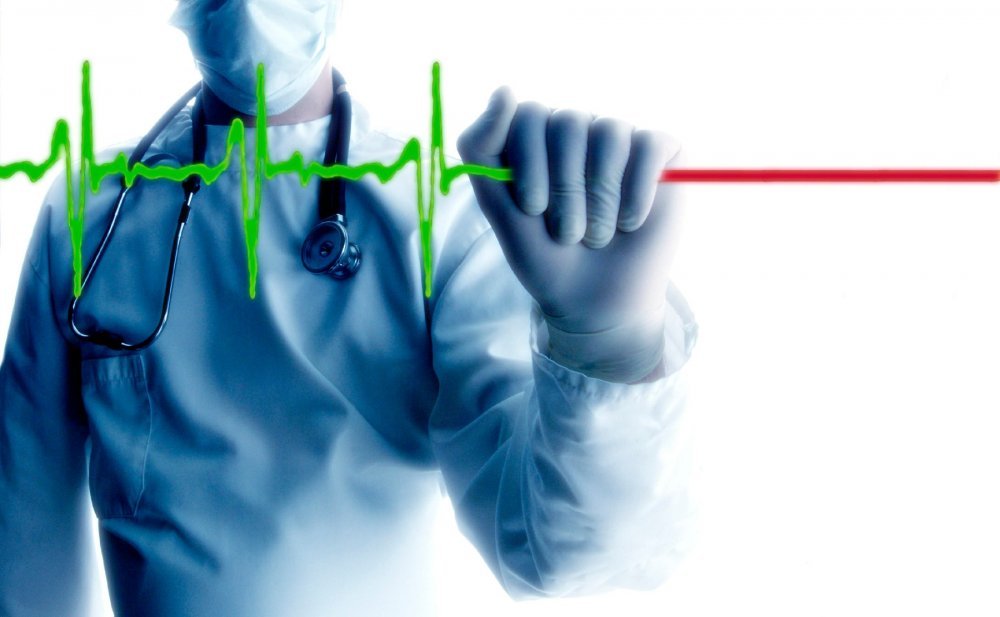

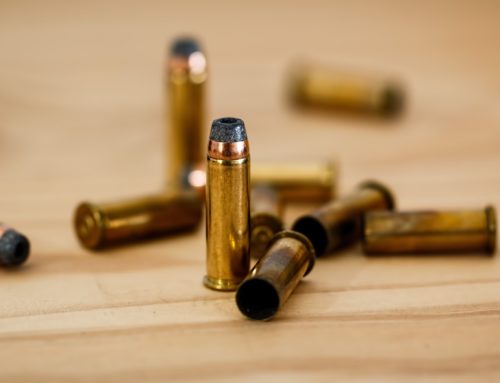

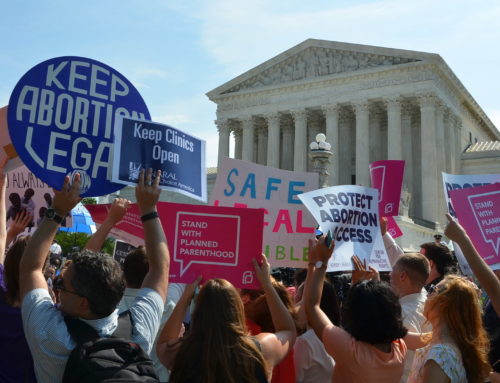


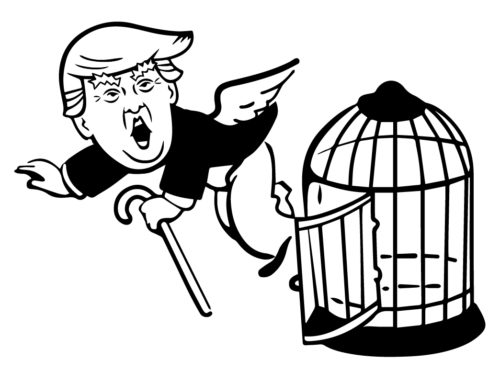
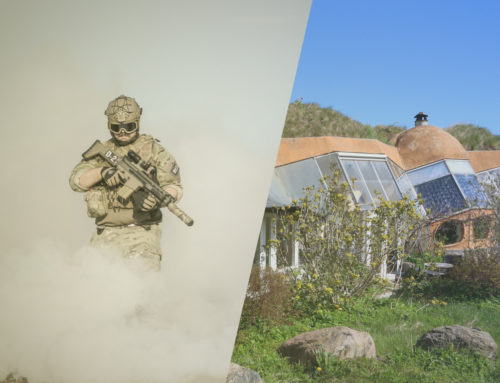
Several thoughts here. Ultimately, if MAID was not an option, suicide for some people would be. Three people who who I knew ended their own lives as a result of extreme physical and/or mental pain. Yes, they could have been put into palliative care and maybe lived for months or even years heavily sedated. But is that life? Who does it benefit? The person who is laying there not aware of much if anything? Or their loved ones who are suffering for all that time to see them like that? Do we not put animals who are in great pain and suffering ‘out of their misery”? And that is even more presumptuous, as we don’t know the animal’s wishes – unlike a person who has requested their own death. Back to my acquaintances who took their own lives: their relatives walked in to see them hanging (and in one of the cases their brains splattered on the wall). Was this better than letting them go cleanly and quietly with foreknowledge and a chance to say good-bye. I don’t believe so.
I do completely agree there shouldn’t be a slippery slope to expecting ill people to choose MAID to save money, time, whatever, and that is up to the doctors who do the assessment to determine if the request is from free will. Most people who advocate against MAID in any circumstance have never themselves experienced the type of pain which leads to this decision, so do not understand the how important it is. I experienced such severe pain for 3 days in the hospital as a result of a cancer treatment that I swore I’ll never subject myself to that again. (btw, the nurses told me to be quiet when I was moaning – I was apparently disturbing the other patients) Whenever I have a twinge in that area now the horrifying memory comes back. So if my cancer returns – I will not be accepting that treatment again, but will use MAID when my quality of life deteriorates significantly. I also have a terror of being helpless in bed for a long time, sedated in palliative care, as many other people do. Again, who does that benefit?
I’m very glad that one aspect of a progressive society has been addressed. A person’s right to end their own suffering. Unlike the examples of smoking in public and drinking while driving not being “rights” aren’t even comparable. One’s medically assisted death does not harm anyone else. You can argue that my loved ones will be hurt by it, but I can assure you they would be hurt much more by either seeing me in extreme pain, or watching my semi-conscious shell laying in a bed for months, and then eventually dying anyway.
Kristine Davis, thanks for your heart-felt comments. My apologies for taking so long to reply (I noticed your comment only a few days ago).
I am deeply sorry that you have experienced so much pain and grief in your life, and I am saddened by the suffering and suicides of your friends. You and your friends have gone through some terribly dark times. My heart aches for you. Again, I am deeply sorry.
I appreciate you, Kristine, for recognizing the concerns about the pain and suffering that drives people to choose death. I agree that the pain and suffering are real (and horrible), and I agree that our freedom of choice is important (hugely important). Nevertheless, I believe it’s important, too, to point out that when it comes to MAID, the choice for death is not merely a personal choice—it is also a public policy issue. It’s important to realize this and to think carefully about it. Again, by advocating for MAID, one is advocating for a public policy. It turns out that public policy decisions have consequences for others. And these are consequences that reasonable and caring people who live in democratic societies ought to consider and discuss before using government to promote death as a “solution.”
As I point out in my article, we need to weigh the pros AND the cons, that is, positive considerations AND negative considerations, not just focus on the pro of personal autonomy. Yes, personal autonomy—personal choice-making—is hugely important. Amen to that! Therefore we should be sure that the choices we promote have real options—positive options. We should not be fooled into accepting a false dichotomy: suffering or death. This limits the options. There is a third option: excellent quality-of-life-promoting care.
About excellent quality-of-life-promoting care: it seems to me that palliative care can (and should) be improved and that suicide prevention can (and should) be improved. And these improvements should be made BEFORE socially embracing (via public policy) the choice for death. Indeed, such improvements would no doubt weaken the need and even the desire for the choice for death. By alleviating suffering and giving people real hope for a good and decent life, we can provide an alternative and positive choice that’s not limited to terrible suffering or death. We can—and should—resist the false dilemma of unbearable suffering or death.
In Canada, it is evil, surely, for Canada’s government to offer a “choice” between (a) suffering and (b) death, when such a “choice” neglects the option of (c) actual assistance in living a good life. (For example, a wheelchair-bound Canadian veteran, who couldn’t navigate the steps to her home in her wheelchair, was offered MAID by Canada’s government instead of providing her with an elevator to get into her home!) Such evil, it seems to me, should be exposed as evil—and should be stopped. Instead, a culture of life and flourishing should be promoted.
—
I would now like to address some of the points you make and clarify the view I set out in my article.
—
You wrote: “Unlike the examples of smoking in public and drinking while driving not being ‘rights’ aren’t even comparable. One’s medically assisted death does not harm anyone else.”
My reply: The point of my examples (i.e., smoking in public and drinking while driving) is to show that personal autonomy is not absolute. We limit personal autonomy when the exercise of it impinges negatively on others. So when we look at public policy decisions, we must also consider possible consequences—possible negative consequences—for our neighbors. (I think this is part of what “love your neighbour” means.) It turns out, as I argue in my article, that justifying one’s medically assisted death as a public policy in terms of personal autonomy does have possible negative consequences for others. Not only are they possible, they’re actual. So we must get out of our personal bubbles and examine the larger picture.
What are those possible negative consequences? Here is a brief list of seven such consequences from my article (some are now actual, not merely possible; please review my article for more details and perhaps, if you are interested, take a look at my 2023 book Untangling Popular Pro-MAID Arguments: Critical Thinking about Medical Assistance in Dying (in Canada)):
1. With the acceptance and expansion of MAID, our society will see suicide more and more as a legitimate way of solving an individual’s problems. Got a problem that makes you suffer? Don’t forget you can get the government’s help to kill yourself! A recent (and disturbing) poll tells us that “One third of Canadians are apparently fine with prescribing assisting suicide for no other reason than the fact that the patient is poor or homeless.”
2. With the acceptance and expansion of MAID, life will no longer be seen as society’s default position. Abandoning this foundational assumption will be dangerous, surely. This is a game changer for our civilization, which took so many years and much effort to develop.
3. By embracing MAID as a solution, we insult the most vulnerable among us by communicating this message to them: We would rather be dead than be like you! This is unkind and dehumanizing, to say the least.
4. By embracing MAID as a solution, efforts and resources for suicide intervention or counseling against suicide may become sidelined in terms of priority. Indeed (as I argue in my book) our government wastes our tax dollars on frivolous spending instead of actually helping people in need.
5. The appeal to personal autonomy justifies more than originally intended—enter the slippery slope. We might want to limit the personal choice for MAID only to end-of-life suffering, but the philosophical school bus (in which personal autonomy is trump) keeps rolling even though we personally jump off. Witness the expansion of MAID in Canada. It’s no longer limited to end-of-life suffering. Now we’re planning on having MAID for people with psychological problems and for “mature minors.” With time the justification of MAID will probably transition from a personal choice to a cultural expectation. (I think this transition is occurring already. As I mentioned above, in Canada we’re already hearing calls for seeing MAID as a solution to poverty and homelessness. It doesn’t take much imagination to realize that, to borrow a couple of phrases popular in Germany in the early 1940s, “useless eaters” and “lives not worthy to be lived” are in the sights of MAID.)
6. Via the social acceptance of MAID, healers will become killers, health care becomes careful killing, and conscientious persons who refuse to kill will be discouraged from practicing medicine. University of Manitoba ethicist Arthur Schafer says this to doctors who have qualms about MAID: “perhaps you should be practicing in a different branch of medicine or perhaps you shouldn’t be practicing as a doctor.” The medical profession is abandoning the Hippocratic Oath, which leads to my next point.
7. Also, via the social acceptance of MAID, we face the spectre of an ugly history repeating itself. From Dr. Leo Alexander, medical consultant for U.S. Chief Counsel for War Crimes at Nuremberg, in his summation of the Nazi German experience (this was written in 1949): “Whatever proportions these crimes finally assumed, it became evident to all who investigated them that they had started from small beginnings. The beginnings at first were merely a subtle shift in emphasis in the basic attitude of the physicians. It started with the acceptance of the attitude, basic in the euthanasia movement, that there is such a thing as life not worthy to be lived.”
Contemporary ethicist Margaret Somerville accurately and memorably summarizes the tendency of proponents of MAID/ euthanasia to focus on the pros at the expense of cons: “If euthanasia were a stone thrown into a pond, pro-euthanasia advocates see only the stone and the immediate splash, not the stone’s antecedents or the widespread ripples it sets off. These blind spots constitute, respectively, a failure of human memory and of human imagination.” Indeed.
—
Re: Your characterization that palliative care means one is living heavily sedated, not much aware of anything, and not having a good quality of life.
My reply: This characterization ignores the quote from palliative care specialist Doris Barwich: “Fortunately, we can assure our patients that with Palliative Care tools and resources, pain and other distressing symptoms can usually be controlled and support provided to ensure comfort and quality of life.” Let me repeat: palliative care can not only control pain but also provide support for ensuring comfort and quality of life. Your characterization also ignores dignity therapy, which, as psychiatrist and palliative care specialist Harvey Chochinov points out, can help people live with purpose and a good quality of life in spite of difficult circumstances.
You seem to think palliative care is merely palliative sedation. Yes, palliative sedation is a part of palliative care (as a last resort in the last days). But palliative sedation is not the whole of palliative care. Much can be done to improve quality of life.
—
Re: “Do we not put animals who are in great pain and suffering ‘out of their misery’?”
My reply: Yes, we do. But what if instead of killing them we could kill their pain and suffering and give them a good life? Shouldn’t we strive to do that if we have the resources to do that? We can, in fact, improve hospital and home care for the suffering by redirecting (otherwise misspent) taxes to doing that. Wouldn’t that be better than putting down people as if they were mere pets?
—
Re: People wanting suicides.
My reply: Maybe instead of helping people kill themselves we could first do all we can to help them live the highest quality of life possible?
—
Re: “I do completely agree there shouldn’t be a slippery slope to expecting ill people to choose MAID to save money, time, whatever, and that is up to the doctors who do the assessment to determine if the request is from free will.”
My reply: But such a slippery slope exists and we (in Canada) have been sliding down it for several years. MAID became legal in Canada in 2016 and deaths due to MAID are increasing every year. Consider these stats (from Statistics Canada):
Year (number of MAID deaths)
2016 (1,018)
2017 (2,838)
2018 (4,493)
2019 (5,665)
2020 (7,611)
2021 (10,092)
2022 (13,241)
It seems to me that we should not trust doctors who see killing as “health care,” especially when, as I point out in my article’s postscript, they haven’t been adequately trained in end-of-life care. It also seems to me that our culture is, as time passes, growing in the expectation that ill people should choose MAID because it saves taxpayer healthcare dollars. It seems to me, too, that with time the so-called individual choice is becoming a social expectation that, I suspect, will become internalized by those who are ill. They will feel they are a burden and obliged to die. And this obligation may morph into a duty—a duty our government will be only too glad to help citizens fulfill. And this duty may very well spread to those people who are homeless, living in poverty, and psychologically not up to snuff.
In sum, it seems to me that medical, social, and psychological problems require medical, social, and psychological solutions—not killing.
—
Thanks again for your thoughts, Kristine. I wish you all and only the best. As mentioned, I have recently written a book titled Untangling Popular Pro-MAID Arguments: Critical Thinking about Medical Assistance in Dying (in Canada). Perhaps my book would be of interest to you and to our readers.
Best regards,
Hendrik